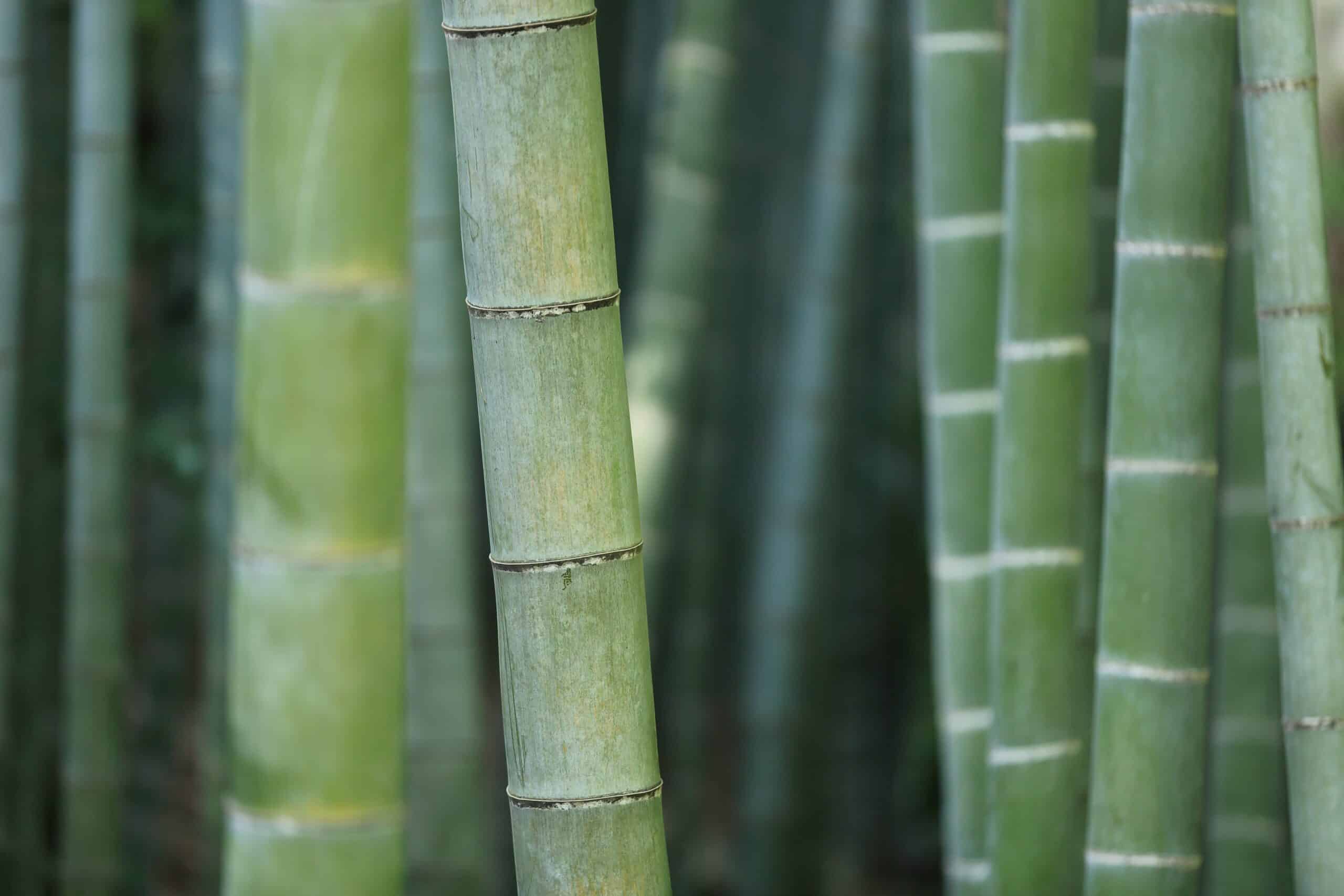Ah, lucky bamboo—the plant of luck and fortune that never fails to bring a smile to the faces of all who behold it! Who would have thought a humble stalk of bamboo could be so powerful? With its ability to bring good luck and prosperity, lucky bamboo is certainly a must-have for any household.
However, before you run off to buy your own bundle of good fortune, there are some important things you should know about growing and caring for lucky bamboo indoors. Lucky bamboo may seem like an easy-care houseplant, but it’s actually surprisingly finicky when it comes to getting the right environment indoors.
In this article, we’ll dive deep into how to grow and care for lucky bamboo indoors. We’ll discuss everything from selecting the right variety to setting up the perfect environment for your lucky bamboo stalk or arrangement. So if you’re ready to get your home into tip-top shape with some good luck vibes, then read on!
Selecting The Right Plant
Luck bamboo is an interesting plant that can add a unique touch to any home. It’s long, slender stalks create an eye-catching display that looks beautiful in any room. Growing and caring for lucky bamboo indoors will require the right knowledge and tools, so it is important to understand how to do it properly.
When selecting the right plant, you should check the color of the stems and leaves. Healthy stems have a bright green color while unhealthy ones may be yellow or brownish. The leaves should also be glossy and vibrant green with no signs of wilting or discoloration. Inspecting the potting soil for pests or diseases is also critical in order to ensure your lucky bamboo remains healthy.
When purchasing your lucky bamboo, make sure you look for plants labelled as Dracaena sanderiana or Dracaena braunii. These are the two most popular types of lucky bamboo and have been known to thrive indoors more easily than other varieties. Additionally, avoid buying plants from nurseries that use artificial colors – these are not real lucky bamboos but rather dyed plants which may not last as long.
With all these tips in mind, you’ll be able to select the perfect plant for your home! Next up is choosing the appropriate pot – an important step to guarantee your lucky bamboo grows strong and healthy indoors!
Choosing The Appropriate Pot
Once you’ve selected the right lucky bamboo plant, it’s time to think about the pot. After all, this is where your chosen plant will live for some time. It’s important not to overlook this step. With the right selection of a pot or container, you can create an aesthetically pleasing and functional environment for your new friend.
When choosing a pot or container, there are several factors to consider. Size is an important factor; pick a pot that is large enough to accommodate the size of your lucky bamboo plant but not so big that it crowds the area around it. The material of the pot is also important; ceramic pots are popular for lucky bamboo since they come in many colors and sizes and can be dressed up with decorative accents like stones or ribbons. Additionally, make sure that any pot you choose has ample drainage holes in the bottom – these will help ensure your lucky bamboo does not become waterlogged.
Finally, take into account where you plan to place your lucky bamboo before making your final selection. Containers with lighter colors may be better suited for bright areas while darker colors might work best if placed in lower light spots indoors. With these tips in mind, you’ll have no trouble picking out a perfect pot for your new plant buddy!
Deciding On The Best Location
Choosing the right location for your lucky bamboo is an important step in ensuring its health and growth. You’ll want to find a place with indirect sunlight, such as near a window that doesn’t get direct light from the sun. Lucky bamboo also thrives in temperatures between 65-80 °F (18-27°C). It’s important to keep your plant away from sources of heat like a furnace or radiator, as this can dry out the soil and cause it to become too hot for your lucky bamboo.
It is also important to consider the humidity levels around your lucky bamboo. Low levels of humidity can cause browning of leaves and other signs of distress. If you live in a dry climate, you may want to use a humidifier near your plant or mist it regularly with water. Adding pebbles or gravel to the top of the pot can also help retain moisture in the soil.
Another thing to consider when deciding on the best location for your lucky bamboo is how often you will be able to water it. While lucky bamboos are fairly drought tolerant, they need water at least once per week during normal growing conditions. Overwatering should still be avoided, so plan on monitoring and adjusting when necessary. With careful placement, proper care, and understanding of its needs, you can easily grow healthy lucky bamboo indoors!
Understanding Lucky Bamboo Needs
It is commonly believed that lucky bamboo needs special care in order to grow and thrive. While this may be true, it’s important to understand the specific needs of lucky bamboo in order to properly nurture it indoors. In this section, we will investigate the truth of this theory and provide an overview of what you need to know about caring for lucky bamboo indoors.
First, it is essential to understand the amount of light that a lucky bamboo plant requires. While direct sunlight can damage a plant, indirect light is important for photosynthesis and healthy growth. It’s best to keep your plant away from windowsills or other areas where it can receive direct sun exposure.
Additionally, you should be mindful of the temperature and humidity levels in your home as these factors affect how well your plant grows. Lucky bamboo prefers temperatures between 65-85℉ and should not be exposed to cold drafts or direct air conditioning vents. Additionally, they like high humidity levels so you may want to place them next to other plants or use a humidifier if needed.
By providing the right conditions for your lucky bamboo indoors, you can ensure that it remains healthy and continues growing strong. With proper care, you can enjoy watching your lucky bamboo thrive for many years to come!
Watering And Fertilizing Lucky Bamboo
Nurturing a lucky bamboo plant is an excellent way to bring good fortune into your home. Luckily, with the right care and attention, these beloved plants can thrive indoors. Here’s what you need to know about watering and fertilizing your lucky bamboo.
To keep your lucky bamboo healthy, it needs to be watered regularly. Before doing so, ensure that the potting soil is dry by sticking your finger 1-2 inches deep into the soil; if it’s damp, wait until it dries out before adding more water. When you do water, make sure to use filtered or distilled water since tap water can contain chemicals and minerals that are harmful to the plant.
In addition to watering regularly, fertilizing is also recommended for optimal growth of your lucky bamboo plant. An all-purpose liquid fertilizer diluted at half strength should be applied every couple of months or when you notice the foliage yellowing or lightening in color. Make sure not to over fertilize as this can lead to root burn or even death of the plant!
With proper hydration and nourishment from fertilizer, your lucky bamboo will stay happy and healthy for years to come. To help maintain its lushness and vibrancy, regular pruning is also necessary; this will help keep its size manageable while encouraging new growth as well.
Pruning And Maintaining Lucky Bamboo
It’s ironic to think that caring for lucky bamboo can be as laborious and meticulous as caring for a pet! Pruning and maintaining this unique houseplant is essential in order to keep it looking its best. After all, you don’t want your lucky bamboo drooping or becoming overgrown!
The maintenance of lucky bamboo involves careful pruning. It’s important to trim any shoots growing too long and remove any dead leaves or stems. If the plant is becoming overcrowded, you can thin it out by removing some stems at their base. Be sure to use clean scissors when pruning in order to avoid infection or disease. Additionally, you should rotate the plant every few weeks so that all parts of it receive equal sunlight exposure.
Finally, proper care of your lucky bamboo includes making sure that the soil remains moist but not soggy, and checking regularly for signs of pests or diseases like root rot. If any problems arise, take quick action with a suitable treatment method. With adequate care, your lucky bamboo can thrive indoors for years! Now let’s move on to controlling for diseases and pests…
Controlling For Diseases And Pests
Gazing upon a healthy lucky bamboo plant may make one feel like they are experiencing a moment of peace and tranquility – the green leaves seeming to stretch outwards as if they were beckoning us closer. But before we can reach that point, there are some things we must do to ensure our plants remain disease-free and pest-free. In this section, we will learn how to control for diseases and pests in our lucky bamboo plants.
The first step is prevention – making sure that our environment is hospitable for the plant. Lucky bamboo requires very high humidity levels in order to remain healthy, so it’s important to mist your plant regularly or place it in an area with high humidity such as a bathroom or near an aquarium. Additionally, make sure your plant receives enough light and don’t let standing water accumulate around its roots.
If you notice any signs of disease or pests on your lucky bamboo, treat it immediately with either a fungicide or an insecticide depending on the issue at hand. If you’re unsure what kind of treatment is necessary, take a sample to your local garden center or contact an agricultural expert who will be able to give you advice on what steps need to be taken. With these preventative tips and treatments in mind, you’ll be better equipped to keep your lucky bamboo healthy and thriving! Moving forward, let’s look at how combining lucky bamboo with other plants can create a beautiful living space.
Combining Lucky Bamboo With Other Plants
Combining lucky bamboo with other plants can be a great way to spruce up the look of your home. It’s important to remember, however, that not all plants will get along with each other. Before you start adding other plants to your lucky bamboo display, it’s essential to research which plants are compatible with each other. Additionally, it may be necessary to adjust the growing conditions for each plant in order for them to thrive together.
The type of environment and soil needed for different plants can vary drastically. For example, some plants require more sunlight than others and this needs to be taken into account when selecting companion plants. The pH level of the soil should also be tested before adding any additional species as different plants have different preferences when it comes to pH levels. It’s also important to be mindful of how much water each plant needs as too much or too little could cause problems for either one.
By researching which species do well together and making sure that the environmental conditions are suitable for both types of vegetation, combining lucky bamboo with other houseplants can create an attractive and unique display in your home. With careful consideration and management, the result could be an eye-catching indoor garden that you’ll enjoy for years to come!
Growing Lucky Bamboo From Cuttings
Did you know that lucky bamboo can be propagated from cuttings? It’s true! In fact, many homeowners are turning to this method to quickly grow their own lucky bamboo plants. Let’s take a look at how it’s done.
Firstly, the cutting should be taken from a mature stem of lucky bamboo. Make sure to use a pair of sharp scissors or pruning shears and make the cut just above one of the nodes, where a new leaf will emerge. The cutting should then be placed in clean water and kept in indirect sunlight. After several weeks, the root system should form and the cutting can be transplanted into soil.
When transplanting, it is important to choose a pot with drainage holes in the bottom and use soil specifically made for indoor plants. The soil should also be well-draining but still capable of holding moisture. Once planted, ensure that your lucky bamboo receives adequate light and water, as proper care is essential for healthy growth and development.
With these simple steps, you can easily propagate a new lucky bamboo plant from just one cutting!
Repotting Lucky Bamboo
Repotting lucky bamboo is important for its health and growth. When the stalks begin to look overcrowded, it’s time to move them into a larger pot. This should be done carefully to not damage the roots of the stalks. First, fill a bigger pot with fresh soil and place it on a level surface. Remove the lucky bamboo from its current container and make sure all of the old soil is removed from the roots. Place the bamboo in the new pot and add more soil around it until it’s firmly in place.
After repotting your lucky bamboo, you’ll want to make sure you water it properly so that it doesn’t become overwatered. Make sure there’s adequate drainage in the new pot and never let standing water sit in the bottom of the container for too long. Provide enough water so that it reaches halfway up each stalk while avoiding excess moisture. It’s also important to keep humidity levels at around 50 percent to ensure your plant stays healthy and continues growing well.
These steps will help keep your lucky bamboo thriving indoors for years to come. With proper care, these plants can add beauty to any space while bringing good luck as an added bonus!
Preventing Overwatering
Over-watering can be the death of a plant, just like underwatering. It is like pouring too much water on a campfire, leaving nothing but soggy ashes behind. Prevention of overwatering is key to growing and caring for lucky bamboo indoors.
The first step in preventing overwatering is to make sure that the soil surrounding the lucky bamboo is well-draining. The soil should not be overly wet or muddy when touched. Additionally, it’s important to water your lucky bamboo with filtered or distilled water since tap water can contain minerals and chlorine which can build up in the soil over time and lead to root rot.
Next, it’s important to use a container with drainage holes near the bottom of the pot so that excess water can easily escape. Watering only when necessary and using an appropriate amount will also help ensure your lucky bamboo’s health; if you’re unsure how much you need to give your plant, feel free to check the top two inches of soil beforehand to determine if it needs more hydration or not.
By following these steps, you can properly care for your lucky bamboo without risking overwatering or any other issues related to incorrect watering practices. With proper care and attention, your lucky bamboo will be happy and healthy for many years to come!
Propagating Lucky Bamboo
Propagating lucky bamboo is like planting a seed and watching it sprout. Growing your own can be an enjoyable experience, as you get to watch your plant grow from the ground up. To propagate lucky bamboo, start by taking off a few of the lower leaves of the stem and cutting it just below the lowest leaf node. You’ll need to use a clean, sharp knife to make sure you don’t damage the stem. After cutting, dip the end into a rooting hormone and then place in a container filled with soil or water. Make sure to keep it moist but not drowning in water.
Once planted, give it plenty of indirect sunlight and humidity so that your new stalks can get established. Be sure to frequently check for signs of rot or mold and remove any unhealthy stalks right away if you see them. If done correctly, you’ll have a beautiful new plant to enjoy!
With propagation, there are some common issues you may run into such as fungal infections or root rot. To prevent this from happening, make sure you’re using clean tools when handling the stems and also practice proper drainage for any containers used for growing lucky bamboo indoors. Additionally, inspect your plants regularly and take preventive measures against pests or disease that could cause damage.
Addressing Common Issues
Propagating lucky bamboo can be a rewarding experience, but common issues may arise when growing indoors. Like any living organism, it’s important to give the plant the right care and attention. Weaving through this section like a tangled thread is the knowledge needed to address these issues.
Firstly, inadequate lighting can be detrimental to lucky bamboo’s growth. To prevent this, make sure the plant is placed in an area of bright indirect sunlight or artificial light for at least six hours each day. Additionally, if the leaves start yellowing or drooping despite ample light, it could indicate an overwatered or underwatered plant. To fix this issue, check the soil moisture daily and water only when it’s dry; too much water can lead to root rot and cause irreparable damage.
Finally, fertilizer should be applied twice a month in order to promote healthy growth and keep pests away from your lucky bamboo. A balanced liquid fertilizer used at half strength should do the trick; however, remember that too much fertilizer can burn the roots of your plant!
By taking these steps and avoiding common mistakes such as over-or under-watering and overfertilizing our plants, we are well on our way to having a happy and healthy lucky bamboo indoors!
Avoiding Common Mistakes
When it comes to growing and caring for lucky bamboo indoors, avoiding common mistakes is essential. It’s important to know the right steps to take in order to provide the best environment for your plant. Here are some tips on how to avoid common mistakes when growing lucky bamboo indoors.
First, make sure that you are using a pot with adequate drainage holes. Too much standing water can cause root rot and eventually kill your plant. Additionally, be sure not to over-water your lucky bamboo; this can lead to yellowing leaves or even stem discoloration. Instead, maintain moist soil by allowing the top layer of soil to dry out slightly between each watering session.
Finally, try not to move your plant around too often as this can cause shock and lead to unhealthy growth and discoloration of the leaves. Lucky bamboo also likes bright indirect light, so find a spot that provides enough natural light but isn’t too harsh or direct for your plant. With proper care and attention, you can successfully grow healthy lucky bamboo indoors!
Following these simple tips will help ensure that you’re providing the best care possible for your lucky bamboo indoors while avoiding any common mistakes along the way. Now let’s look at troubleshooting tips should any issues arise during the life of your indoor plant!
Troubleshooting Tips
The troubleshooting tips for lucky bamboo are numerous, but necessary. Navigating the nuances of this plant can be tricky, but it’s worth taking the time to get it right.
Tending to troublesome troubles and tackling tenacious tribulations are two prudent pathways to successful care of lucky bamboo. From figuring out fertilizer frequency to assessing adequate air circulation, there is always something that needs attention when caring for this special species.
It’s important to keep an eye out for any irregularities that may arise from improper growing conditions or insufficient nutrients in the soil. Checking on the overall health of your lucky bamboo should be a regular part of your maintenance routine, in order to ensure its continued growth and well-being. Keeping these tips in mind will help you avoid any potential problems and maintain a healthy and happy bamboo plant!
Frequently Asked Questions
Does Lucky Bamboo Bring Good Luck?
Some say that luck is in the eye of the beholder, but there are many who believe that lucky bamboo can bring good fortune. Since ancient times, this plant has been embraced by cultures around the world for its symbolic meaning and potential to improve luck. So, does lucky bamboo really bring good luck? Let’s explore this question.
The belief in the power of lucky bamboo stems from an ancient Chinese proverb: “a symbol of good luck and a lifetime of happiness.” It is a simple yet meaningful thought that suggests that having a lucky bamboo plant in your home will bring you joy and prosperity. According to Feng Shui principles, placing a lucky bamboo stalk in certain areas of your home or office can encourage positive energy flow and invite positive energies into your life. Additionally, giving away stalks as gifts is said to strengthen relationships and bring good luck to both sender and recipient alike.
One thing’s for sure – with proper care, a lucky bamboo can be a beautiful addition to any home. Growing indoors requires plenty of indirect sunlight along with regular water changes every 1-2 weeks depending on the environment. With its ability to tolerate low light conditions and thrive with minimal effort, it’s no wonder why so many people turn to this easy-to-care-for plant when looking for a little luck!
How Long Does Lucky Bamboo Take To Grow?
The concept of luck has been part of humanity since ancient times. Lucky bamboo, known as ‘Dracaena sanderiana’, is a popular plant for many, who believe it can bring good fortune and prosperity. But how long does it take to grow?
It takes time and patience to grow lucky bamboo – usually around one year before any visible signs of growth. The plant grows best in warm temperatures ranging from 65°F-85°F (18°C-29°C). It prefers indirect sunlight, so the ideal spot would be near an east or west facing window. The soil should remain moist but not overly wet; water once every two weeks while avoiding direct contact with the leaves.
Over time, it will start to show new shoots and eventually reach heights up to three feet tall. Pruning is essential for shaping your lucky bamboo and helping it thrive indoors. With proper care and attention, your plant will look healthy for years to come. So if you’re looking for some extra luck in your life, give this unique and resilient houseplant a try!
Do I Need To Fertilize Lucky Bamboo?
Fertilizing lucky bamboo is an important step in caring for it indoors. An adequate feed will help the plant maintain its lush, green appearance and prevent it from becoming leggy or weak. However, when fertilizing, it’s important to be aware that too much fertilizer can cause leaf burn and root damage.
The type of fertilizer used is also very important. Lucky bamboo is a tropical plant and needs a balanced fertilizer with more nitrogen than phosphorus or potassium. For example, a 10-10-10 fertilizer would be ideal as this has an equal balance of all three elements. A diluted liquid fertilizer should be applied every two weeks during the growing season (spring and summer) at half the recommended strength on the packaging instructions.
It’s best to avoid using granular fertilizers as they can damage the roots when placed in close contact with them. If you’re unsure about how much to apply, start off by using a low dosage and then increase gradually if necessary – remember less is more! Taking these steps will help ensure your lucky bamboo remains healthy and vibrant for many years to come.
What Type Of Light Does Lucky Bamboo Need?
Lucky bamboo is a popular houseplant known for its hardiness and ease of care. However, one important aspect of caring for it indoors is understanding what kind of light it needs to thrive. Take the example of Eva, who recently adopted a lucky bamboo plant in her home. She was unsure what type of light best suited her new plant and wanted to ensure it would stay healthy.
When growing lucky bamboo indoors, there are several things to consider regarding lighting. The most important is that the plant should be kept out of direct sunlight, as this can cause it to burn or even die from sun damage. Instead, find an area with bright but indirect sunlight such as near a window or east-facing wall. If possible, try to supplement the natural light with full spectrum fluorescent lights so that the plant receives adequate lighting all day long.
It’s also important to remember that lucky bamboo does not require a lot of light and can actually suffer if exposed to too much brightness or direct sunlight. To protect your plant from overexposure, place it away from windows during peak hours when the sun is strongest and position any artificial lights further away than usual so they don’t become too intense. With proper lighting and regular watering, you can ensure your lucky bamboo stays happy and healthy in your home!
How Do I Know If My Lucky Bamboo Needs Repotting?
Repotting lucky bamboo is an important part of ensuring its health and growth. It’s important to keep a close eye on the pot it’s in, as this will tell you when the time for repotting has come. Using a rhetorical device, I implore readers to pay attention to their lucky bamboo and its container since repotting could be the difference between a thriving plant and one that never reaches its full potential.
When considering whether your lucky bamboo needs repotting or not there are several key things to look out for. Firstly, if you notice roots starting to protrude from the drainage holes at the bottom of the pot, this is usually an indication that it needs more space. Secondly, if you observe water gathering at the bottom of the pot after watering it, this could mean that it has outgrown its current pot size. Finally, check to see if there is visible soil erosion around or inside of the pot; this often means that due to over-watering or inadequate drainage, new soil should be added.
If any of these signs are present then it’s likely time for your lucky bamboo to be repotted into a larger container with fresh soil and adequate drainage holes; giving it more space will allow for proper root growth and healthy development over time. Therefore, keeping an eye on your lucky bamboo’s pot is essential in helping it reach its full potential.
Conclusion
In conclusion, lucky bamboo is a great way to bring good luck into your home. With proper care and attention, it can grow tall and lush in no time. Fertilizing and providing the right type of light are key components to growing healthy lucky bamboo. For those who want to repot their bamboo, keep an eye out for when the plant becomes too big for its pot.
Caring for lucky bamboo is not difficult but it does require dedication. Make sure to keep the soil moist, provide adequate light and fertilizer, and watch out for signs that your plant needs repotting. With these simple steps, anyone can have a thriving lucky bamboo plant that will bring luck and joy into their lives.
Lucky bamboo is an attractive addition to any home or garden. Whether you are looking for luck or just seeking a bit of greenery indoors, this easy-to-care-for plant can be a great choice. With minimal effort on your part, you can have beautiful plants that will reward you with good fortune!





























